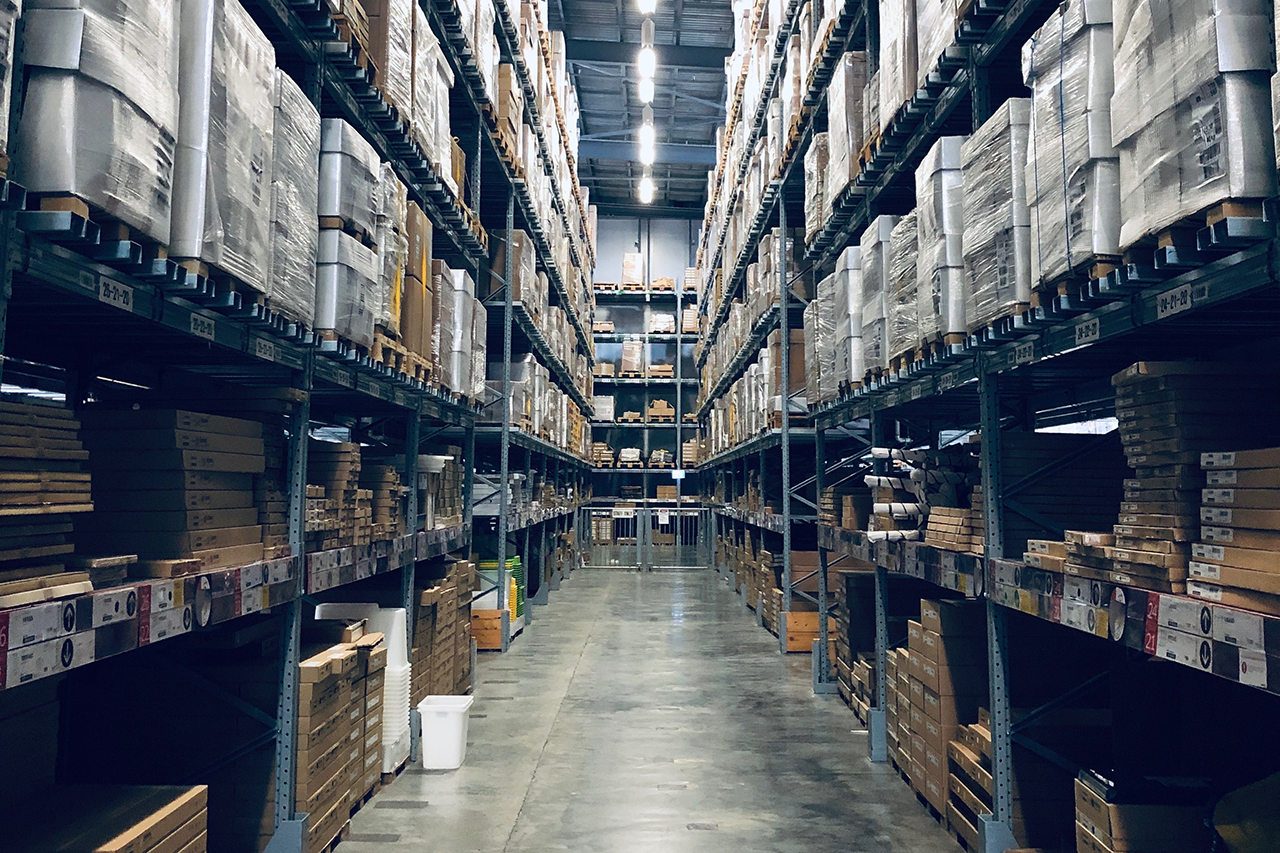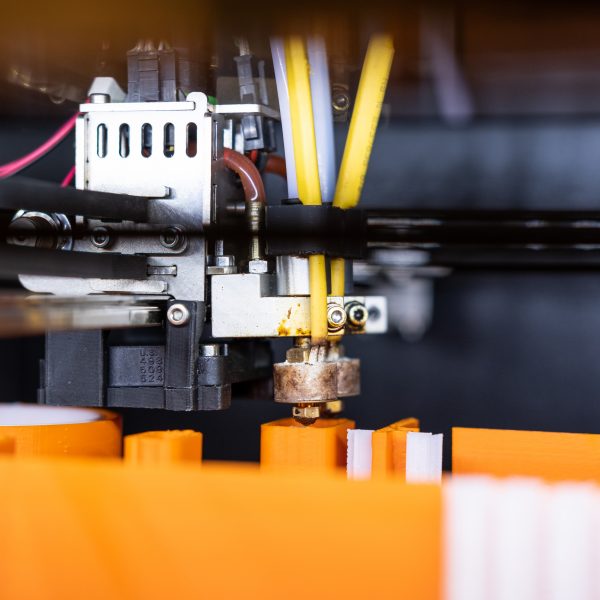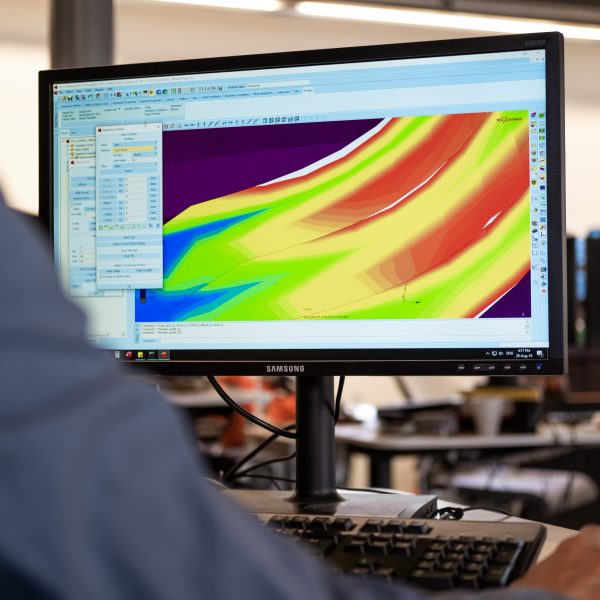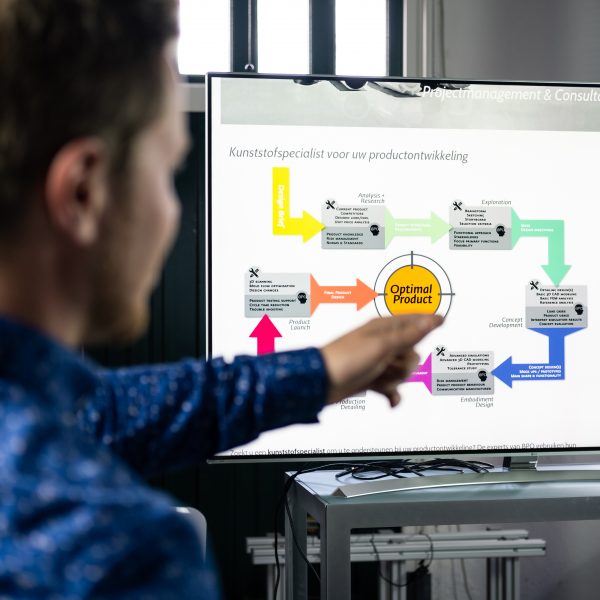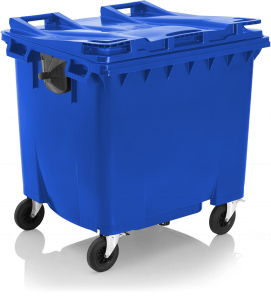
Garbage containers
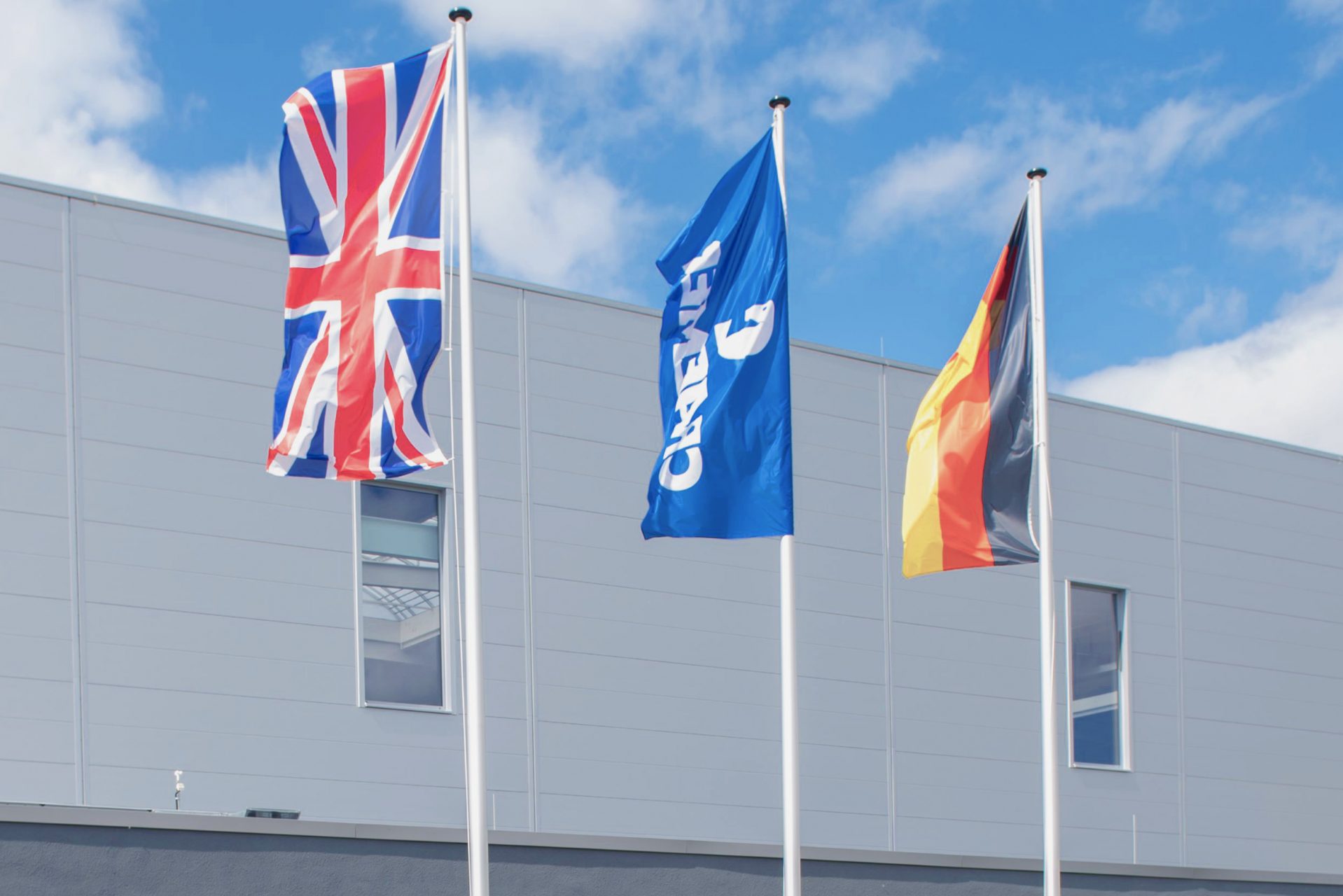
BPO developed the MGBneo⁴ wheelie bins for Craemer GmbH from the first sketch ideas to the 3D data delivery to the toolmaker of the very big and complex moulds required to produce all plastic components. The largest part is the 1100 litre body, a more than 25 kg HDPE part, being produced on Craemer’s 5500 tonnes injection moulding machines. The series consists of a 660, 770 and 1100 litre version, completing the range of wheelie bins for Paul Craemer. The design of the new family members matches the design of the smaller volume Neo series.
More robust and less plastic. Like any development executed by BPO, the project was intensively supported with FEM and injection moulding simulations. This resulted in light-weight HDPE bodies and lids that can exactly be produced on the intended machines and a product that meets all standardised test.
Four wheel bins have handles on all sides of the body for manoeuvring and position the bin behind the garbage truck. The Ø200 mm castor wheels are heavily loaded when moving the bins with content and need to withstand impact when bumping into the kerbside. The connection area of the wheels is designed to withstand the forces that the rigid steel wheelbase applies to the plastic.
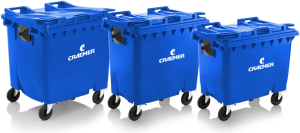
The containers correspond to the standards for this type of product, including all main dimensions being strictly prescribed. Within this limited design space, BPO managed to realise some innovative features. The shape of the lid is minimal in height and shaped to prevent water ingress when opening the lid, having optimal stiffness and allowing compact and stable stacking of the containers with the lids in the open position. Another robust and clever solution is the construction of the hinges, which are; contrary to other bins, assembled with one long pin in a solid base, allowing easy assembly and minimising the risk of having fracture in a typical critical area.
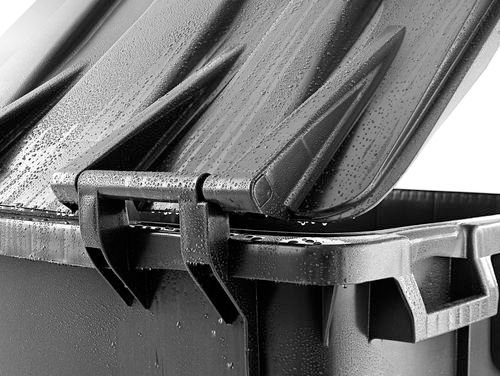
During the development many different load cases were simulated. The results were used to make choices in concept development and to ensure the final design would meet the test as required in the standards. These tests included impact testing by dropping the container, tilting with heavy weight inside, kerb impact, ball drop and many more.
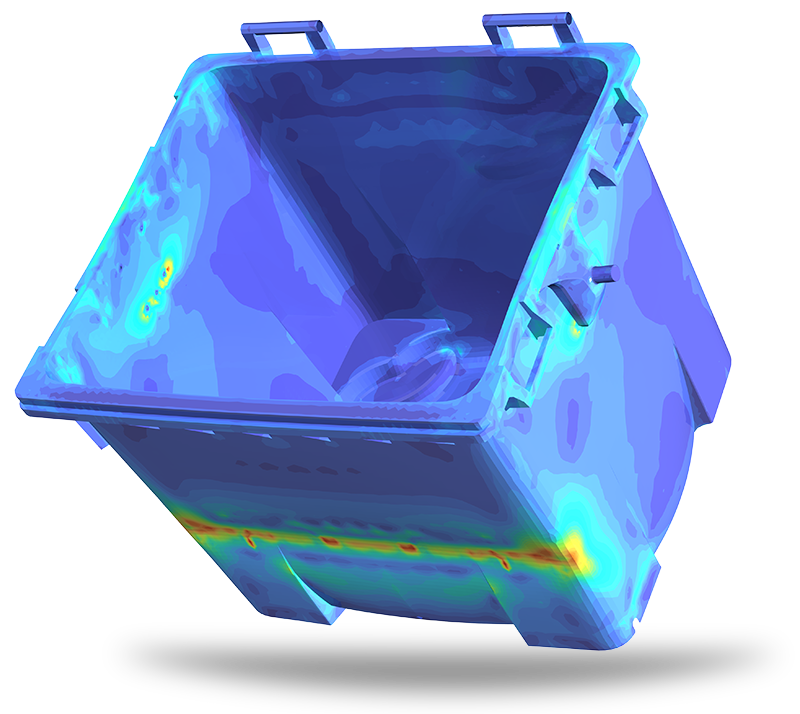
For the lids and bodies, injection moulding simulations were used to analyse and optimise the injection locations. In close cooperation with Craemer and the toolmaker, the locations and hotrunner diameters were fine-tuned in detail. The warpage of the parts was also simulated and geometrical precautions were taken to ensure straight parts after injection moulding. Without these simulation tools, thorough cooperation with Craemer’s R&D department and BPO’s experience in development of heavy loaded products like garbage containers, it would have been impossible to accomplish these new, innovative designs as they are being produced by Craemer and can be seen in the streets of the first communities around europe.

The wheelie bins can be delivered with many different optional features: lifting trunnions, noise insulation plugs, (gravity) locks, glass inserts, etc. All parts are constructed in such a way that different versions of the products can be assembled with minimal effort and be personalised by changing mould inserts.
More information can be found on the website: www.craemer.com
Gebruikte diensten
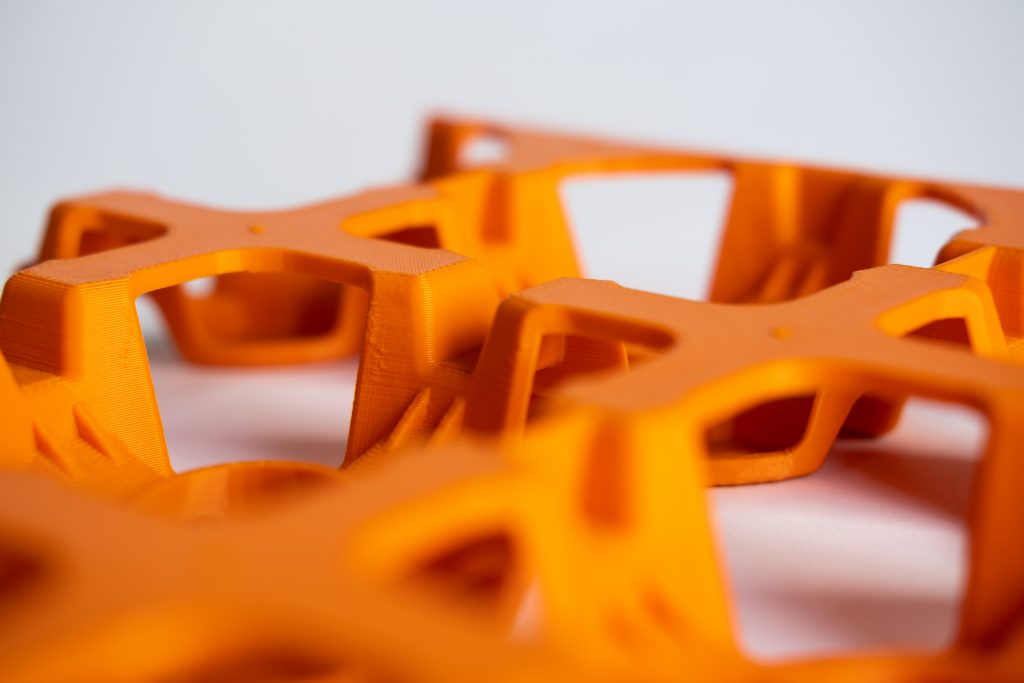
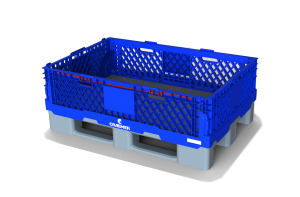
Pallet Collar
